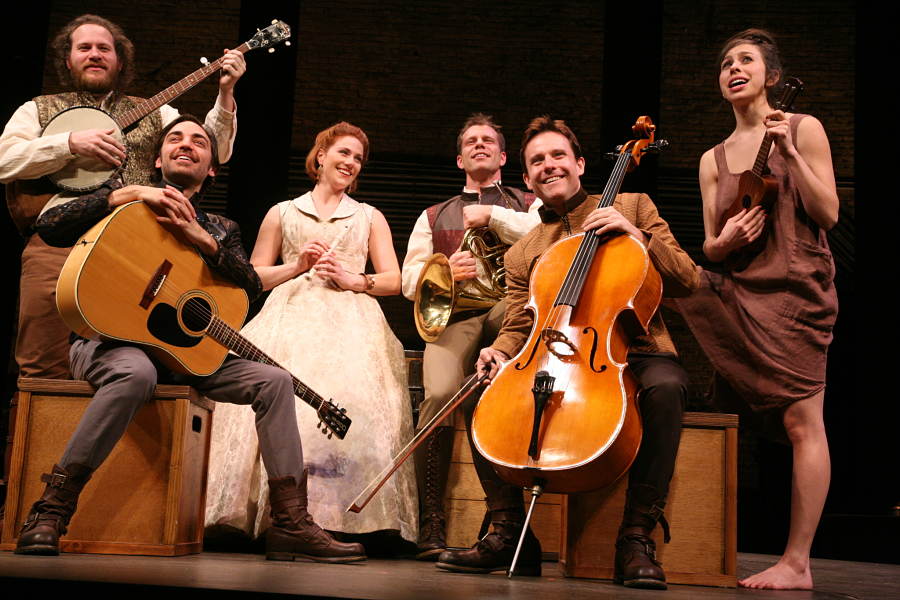In a quartet of new additions to an ever-growing body of literature, Shakespeare seems to impart his generous spirit to all who write about him. The densest scholarly exegeses in Shakespeare Up Close: Reading Early Modern Texts warmly convey the authors’ faith that close textual readings unlock greater pleasure in his work. Even so blunt a naysayer as Jane Smiley—who in Living with Shakespeare: Essays by Writers, Actors, and Directors criticizes King Lear for condoning a senile patriarch’s tyranny—admits that when she rewrote Lear from the daughters’ point of view in her novel A Thousand Acres, “I experienced my friend William Shakespeare as a fellow toiler in the literary muck, and it was a heartening experience.”
Shakespeare on Theatre invites us backstage at an Elizabethan playhouse, combining the Bard’s own words with Nick de Somogyi’s illuminating commentaries to see his plays as part of a living theatrical tradition. And playwright Ken Ludwig’s How to Teach Your Children Shakespeare practically quivers with enthusiasm. “DO NOT BE DAUNTED,” he urges parents about to embark on the forbidding task of persuading their young to recite a soliloquy from Hamlet. “THE PURPOSE OF YOUR WORK WITH YOUR CHILDREN IS TO DEMYSTIFY SHAKESPEARE.” Cut “with your children” and Ludwig’s capitalized exhortation could serve as a motto for all four of these books: Shakespeare, they insist, is for everyone.
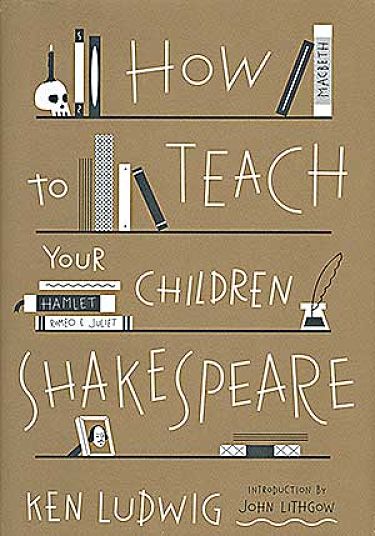
Speaking as the mother of a Shakespeare-loving 18-year-old, I’m not convinced my son would love Shakespeare as much if I’d followed Ludwig’s advice to get him memorizing speeches at age six. I agree with the many essayists in Living with Shakespeare and Shakespeare Up Close who argue that the plays are most accessible and exciting in performance, when actors make palpable the meaning of language that can seem difficult on the page. Still, Ludwig makes a strong case for home-schooled Shakespeare in a charming text that leads readers (and their kids) by the hand from short passages in the comedies through such favorites as “All the world’s a stage” and “Once more unto the breach,” to Prospero’s autumnal valediction in “Our revels now are ended.” Ludwig’s explications are brisk and basic; he sketches themes and background with user-friendly cogency, making this a nice introduction to Shakespeare (even if your child balks at the memorization).
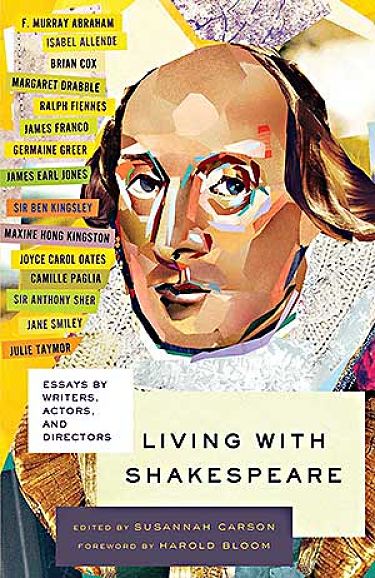
Living with Shakespeare’s editor, Susannah Carson, is as eager as Ludwig not to intimidate. Aiming “to celebrate the many different approaches to appreciating Shakespeare that are possible,” she rounds up A-list contributors: Ralph Fiennes on Coriolanus, F. Murray Abraham on The Merchant of Venice, James Earl Jones on Othello. Her populist mix also contains such authors as Isabel Allende, Camille Paglia, and Joyce Carol Oates, plus a few comic-book writers for a 21st-century edge.
Some of the most engaging pieces draw on the authors’ stage experiences. Eve Best’s account of working at the newly recreated Globe Theatre underscores the intimacy between performers and spectators afforded by an Elizabethan theatre space. “When you’re on stage and you look out,” she writes, “you can see the play happening in [people’s] eyes…The play is a conversation that happens between the characters via the audience.” Americans Jesse Austrian, Noah Brody, and Ben Steinfeld, founders of the Fiasco Theater, locate the genesis of their inventive Cymbeline in a crucial insight: “We decided to trust that old Will knew what he was doing.” Instead of trying to smooth over the contradictions of this late romance, they embraced its wild shifts in tone and blatantly improbable plot in a non-realistic approach keyed to the central theme: “Things are not what they seem to be.”
The Fiasco folks confess that they “used an axe” to cut whole scenes and characters from Cymbeline, guided by the question, “What do we absolutely have to have to tell the story?” Likewise, using his madcap The Complete Works of William Shakespeare (abridged) as an hilarious case study in the way a script is altered by the circumstances of production (dirty jokes toned down for Southern audiences, Schrödingers’s cat reference inserted for Fermilab physicists), Jess Winfield of the Reduced Shakespeare Company contends that Shakespeare did the same thing all the time, revising his plays for particular performers and venues. Winfield isn’t entirely kidding when he surmises that the substantial differences between the Folio and Quarto editions of Hamlet stem from its checkered production history: “Workshopped in the suburbs, censored by the government, premiered in London, revised after so-so reviews, then later cut down for a touring company whose prompt-script was pirated.” Reconnecting us with Shakespeare the pragmatic professional, his is the most stimulating essay in an enjoyable, wide-ranging collection.
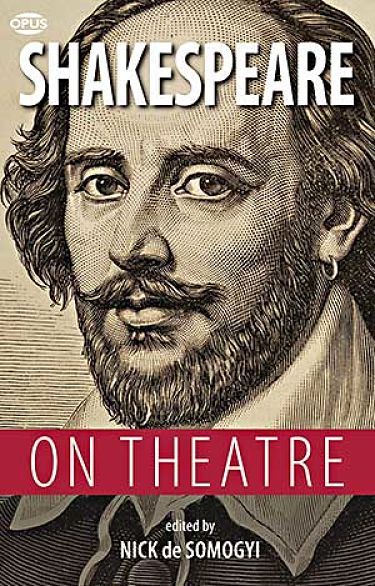
Editor Nick de Somogyi also focuses on the playwright as “a working man of the theatre” in Shakespeare on Theatre. He elucidates the specifics of Elizabethan stage practice via well-chosen extracts, framed by his own deft narrative. The connection can be direct, as when “Rumour, painted full of tongues,” opens Henry IV, Part 2 by commanding the audience, “Open your ears!” What he really means is “Shut your mouths,” Somogyi comments; in an open-air theatre that can neither dim the lights nor raise the curtain, it’s necessary to let people know the play is about to begin, and this is a theatre “essentially reliant…on the power of the spoken word.” Sometimes Somogyi will discern a more metaphysical link, observing that Macbeth’s “Tomorrow, and tomorrow, and tomorrow” soliloquy “reimagines the daily grind of a lowly actor’s career” (the “poor player / that struts and frets his hour upon the stage”) as a bleak example of the transient, meaningless existence Macbeth sees as the essential human condition.
Shakespeare’s ambivalent feelings about the theatre’s tawdry reputation provide some striking material. Mock-deprecating references by the Chorus in Henry V to the stage as “this unworthy scaffold…this cockpit” acknowledge the Elizabethan theatre’s associations with public executions and blood sports. Its location outside the city limits had other unsavory connotations: “Dwell I but in the suburbs / Of your good pleasure?” Portia asks in Julius Caesar. “If it be no more / Portia is Brutus’ harlot, not his wife.” Actors and prostitutes alike plied their trade in the London suburbs, Somogyi notes.
He also contextualizes many of Shakespeare’s most famous speeches within messy Elizabethan theatrical reality in which drunken actors blew lines and stage weapons misfired. It’s been a while since live ammo discharged onstage actually killed members of the audience, but today’s theatre folk will find a good deal that’s familiar in this atmospheric portrait of life on the wicked stage 500 years ago.
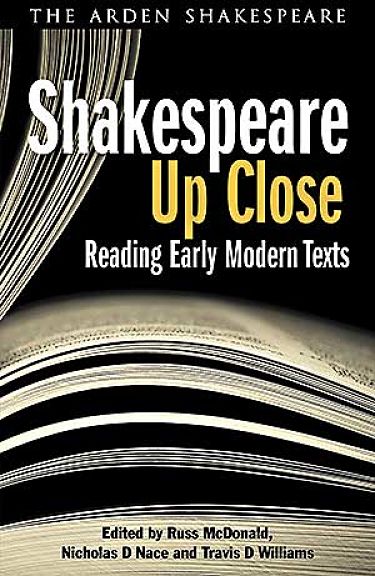
Shakespeare Up Close is a more scholarly collection, clearly meant for classroom use, with the majority of essays by academics engaged in detailed textual analysis. But this sort of analysis can be extremely useful in performing Shakespeare. In his fascinating discussion of a Macbeth he directed at the American Shakespeare Center in Virginia, Ralph Alan Cohen describes “an insistent pattern of false exits” that he discovered by paying careful attention to the stage directions implied in the rhymed couplets that traditionally signal an actor’s exit. “This pattern of hesitation,” he concludes, “is deeply inscribed in the hesitation at the heart of the narrative: Macbeth’s decision about whether or not to act on his ambition.” It’s a brilliant example of how close reading can inspire staging that visually reinforces Shakespeare’s themes.
Michael Ellis-Tolaydo uses similarly detailed analysis to defend his controversial interpretation of Prospero in a Pennsylvania Shakespeare Festival production of The Tempest. An array of well-chosen quotations supports his contention that Prospero is an angry, vengeful man and that “Our revels now are ended” is not the magisterial summing-up of a magician but the weary concession of someone coming to terms with his powerlessness. It’s not the only way to read the part, but it’s thoughtful and provocative.
Indeed, a number of these academic essays suggest stimulating possibilities for performance, such as Lena Cowen Orlin’s explanation of where exactly Gertrude’s “closet” is located in Hamlet and Travis D. Williams’ smart, funny catalogue of the various ways an actor could speak the “O” in Henry V’s “O for a muse of fire” prologue.
The thread that runs from the highly intellectual Shakespeare Up Close all the way to the cheerleading How to Teach Your Children Shakespeare is, of course, “this miraculous language,” as Ben Kingsley calls it in Living with Shakespeare. The occasional excerpts from other contemporary playwrights in Shakespeare on Theatre remind us that, fine as Christopher Marlowe and Ben Jonson are, there is only one Shakespeare. These four books will have the same impact on those of us hopelessly addicted to his glorious way with words: You’ll want to run out and hear them again in a theatre.
Wendy Smith writes frequently for this magazine.

